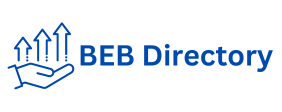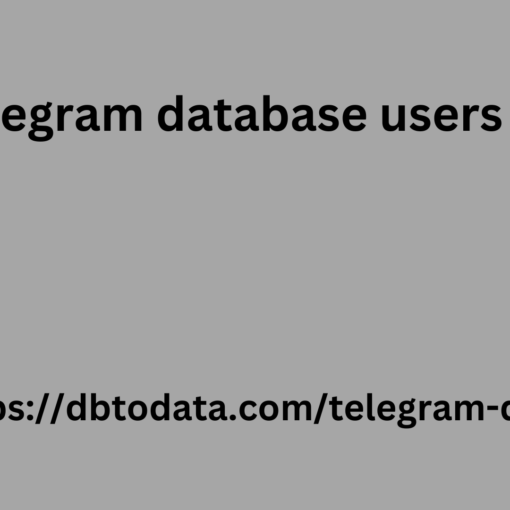In the exciting and competitive world of SEO, one strategy that stands out for its ethical approach and adherence to search engine guidelines is White Hat SEO. In this article, we will explore in detail this approach that has become the fundamental basis for achieving long-lasting and quality results in the digital world.
White Hat SEO encompasses a series of techniques and practices that align with the guidelines of search engines, such as Google, with the aim of improving the organic visibility of a website. These techniques include creating valuable content, keyword research, optimizing the mobile version of the website, structuring content, optimizing loading speed, and satisfying the user’s search intent.
Unlike Black Hat SEO strategies, which aim to achieve quick results but at the expense of violating search engine guidelines, White Hat SEO focuses on building a strong and long-lasting online presence. It also seeks to provide an optimal user experience by providing relevant and quality content that meets the search needs of the target audience.
Throughout this article, we will explore each of the techniques and concepts mentioned in more detail, to help you understand the importance of this strategy and differentiate it from Black Hat SEO tactics. Let’s begin our journey into the world of White Hat SEO!
What is White Hat SEO?
White Hat SEO is a search engine optimization strategy that focuses on following ethical and legitimate guidelines set by search engines. It is based on practices and techniques that are in line with established policies and standards, and seeks to improve a website’s visibility and organic ranking in the long term.
White Hat SEO focuses on creating quality and relevant content for users, providing a satisfying experience for the visitor. This involves developing useful, original and valuable content that responds to users’ search needs. In addition, attention is paid to website structure, usability and navigation, ensuring an intuitive and easy experience for users.
Other common White Hat SEO practices include extensive keyword research to identify relevant terms, technical website optimization to improve loading speed and mobile friendliness, and building high-quality, natural links.
In short, White Hat SEO is all about following best practices and maintaining strong ethics in optimizing a website for search engines. In doing so, you aim to build a long-lasting, credible online presence, generating organic traffic and increasing visibility in search results in a legitimate and long-term manner.
White Hat SEO Techniques
Now, we will list the White Hat SEO techniques, those legitimate and ethical strategies used to optimize a website according to the guidelines set by search engines. From creating quality content to keyword research, technical website optimization, natural link building, and more, we will explore each of these techniques in detail, revealing how they contribute to success in search results and providing a valuable experience for users.
Creating valuable content
Creating valuable content is a fundamental technique in White Hat SEO. It consists of developing relevant, useful and original content that satisfies users’ information needs or solves their problems.
By creating valuable content, you aim to provide quality information that is interesting, up-to-date, and engaging for website visitors. This not only builds trust and credibility, but also helps establish the page’s authority in search engines.
To apply this technique, it is essential to thoroughly understand the target audience and their interests. Market research and keyword analysis should be conducted to identify relevant topics and keywords. Different content formats such as articles, guides, videos, infographics, or podcasts can then be used to address those topics effectively.
Additionally, it is important to consider optimizing your content for search engines by using keywords naturally and making sure your content is well-structured with headings, concise paragraphs, and relevant internal links.
Keyword Research
Keyword research is a key technique in White Hat SEO that consists of identifying and selecting the words and phrases that users use in search engines to find information related to a specific topic. This technique allows you to better understand how users express themselves and which are the most relevant and searched keywords in a market niche.
Keyword research is done using specialized tools how to build telemarketing data that provide data on search volume, competition, and keyword relevance. With this information, SEO specialists can choose the right keywords to optimize content and improve its visibility in search results.
When conducting keyword research, it’s important to consider users’ search intent. Some terms may indicate that the user is looking for general information, while others may indicate that they’re looking to make a purchase or find a specific solution. Understanding these intents helps guide your content strategy and create relevant and valuable content for users.
Once relevant keywords have been identified, they can be used strategically in the content, including in titles, headings, body text and meta tags. However, it is important to use keywords naturally and avoid keyword stuffing, as search engines penalize this practice.
Mobile version
Mobile versioning, also known as responsive design and optimization, is a vital technique in White Hat SEO. It refers to adapting a website so that it displays correctly and functionally on mobile devices, such as smartphones and tablets.
Nowadays, the use of mobile devices to access the Internet has increased significantly, so it is essential that a website is optimized and offers a smooth and pleasant experience on these devices. Search engines, such as Google, have also prioritized the mobile experience, considering it an important factor in search rankings.
The mobile version involves the implementation of a responsive design, which automatically adapts to the screen size of the device used. This ensures that users can navigate, read and access all the website’s functionalities without problems, without having to zoom or scroll horizontally.
Additionally, mobile optimization also involves anuncios distintivos de 2021 fast page loading as mobile users often have more limited connections compared to broadband connections. This involves minimizing file sizes, compressing images, and optimizing the overall performance of the website.
Not only does a mobile version improve the user experience, it can also have a positive impact on search rankings. Google and other search engines consider mobile optimization as an important factor in their ranking algorithm.
Structuring content
Content structuring is an important technique in White Hat SEO that involves organizing and presenting content in a logical and coherent manner. A good content structure not only makes it easier for users to read and understand, but also improves the browsing experience and indexing by search engines.
To structure content effectively, it is common to use hierarchical headings, such as HTML heading tags (H1, H2, H3, etc.), which help establish a hierarchy and logical flow of information. Proper use of these headings not only improves readability, but also allows search engines to understand the structure and context of the content.
Additionally, other structuring elements such as well-organized paragraphs, lists, and bullet points can be used to make the content easier to read and scannable. This allows users to quickly find relevant information and dive into the content more effectively.
Content structuring can also include the use of relevant internal links, which coherently connect different pages and sections of the website. This helps users navigate between related content and search engines understand the relationship between different pages.
It is important to note that a good content structure not only benefits the user experience, but also facilitates indexing by search engines, which can contribute to better visibility and ranking in search results.
Website loading speed
Website loading speed is a critical technique in White Hat SEO. It refers to the time it takes for a website to fully load in the user’s browser. A fast website loading is essential both for improving user experience and meeting search engine requirements.
Today’s users expect websites to load quickly au cell numbers and if a website takes too long to load, users are likely to leave the page and look for another option. This can lead to a high bounce rate and negatively impact site traffic and engagement.
Additionally, search engines, such as Google, consider website loading speed as an important factor in their ranking algorithm. Faster websites usually receive a higher position in search results compared to those that are slower. This includes optimizing the site’s code and files, such as compressing images and HTML, CSS, and JavaScript files.
It is also important to consider choosing a reliable and fast hosting, as well as minimizing the use of elements that slow down loading, such as unnecessary scripts or excessive redirects.
Satisfies the user’s search intent
Satisfying user search intent is a fundamental technique in White Hat SEO. It involves understanding and providing exactly what users are looking for when they perform a query on a search engine.
Increasingly, search engines like Google are focusing on delivering relevant results that satisfy the user’s search intent rather than simply matching the keywords used. This means that it is crucial to understand what a user is trying to achieve with their search and provide the appropriate information or solution.
There are different types of search intent, such as informational, transactional, navigational, and research. For example, a user may be searching for information on a specific topic, looking for a product or service to purchase, searching for a web page, or conducting more detailed research on a topic.
To satisfy user search intent, it is important to create relevant and useful content that directly addresses and answers user questions or needs. This involves understanding the search keywords used, analyzing existing search results, and delivering higher quality and higher value content.
In addition, it is essential to have clear and user-friendly navigation on the website so that users can quickly find the information they are looking for.





